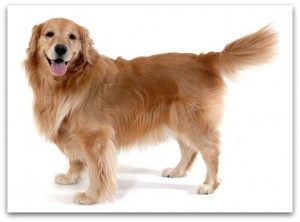Uncle John knows pretty much everything—and if he doesn’t, he heads his massive research library, or puts one of his many associates on the case. So go ahead: In the comments below, ask Uncle John anything. (And if we answer your question sometime, we’ll send you a free book!) This week’s question comes from reader Renee B., who asks…
Why do dogs wag their tails when they’re excited?

A dog uses its tail to express a lot of emotions, not just happiness or excitement. Think of all the different ways humans can smile: there’s one for genuine happiness, a polite grin, a sarcastic wince, etc. The way a dog wags its tail can also share information about where they see themselves in the “pack”—a dominant or aggressive dog may only wag the tip of their tail when excited, letting you know that they’re happy, but also that they’re nobody’s fool. On the other side, a tail held low and wagging means the dog is showing fear, or letting you know that they’re submissive. (Middle height wag? That means relaxed.)
Speed of movement and height all contribute to the tail’s vocabulary and grammar, if you will, making a tail wag the way dogs use to communicate primarily and most importantly with each other—a dog’s eyes are more sensitive to movement than they are colors, physical details, or facial expressions.







